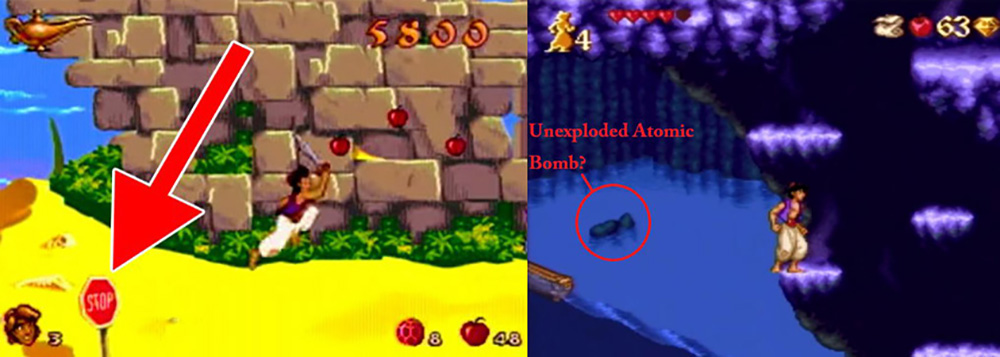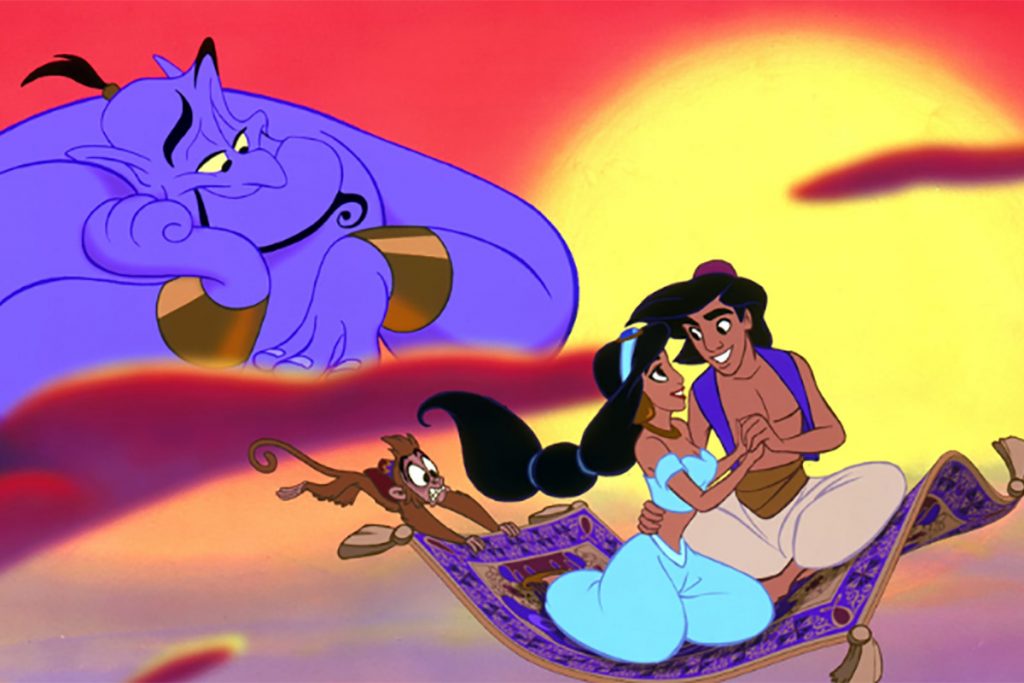With the recent release of the Disney+ streaming service, many fans are heading back into the old Disney archives to find some animated classics that were once forgotten. One of those previously hard-to-find gems is 1992’s Aladdin, which is also enjoying a resurgence thanks to the live-action remake released earlier this year starring Will Smith.
Aladdin is the tale of a young street urchin who finds an old magic lamp and befriends the wacky genie inside, all while vying for the attention of the Sultan’s daughter, Princess Jasmine. The movie quickly became the highest-grossing film of 1992 and the highest-grossing animated film of all-time until The Lion King came along two years later.
Aladdin always seemed like such an innocent and kind-hearted movie that was based on the Arabic folktale One Thousand and One Nights, but a few years ago, fans began questioning the original timeline of the movie.
The theory states that Aladdin is actually a post-apocalyptic movie set 11,000 years into the future, depicting a vast post-nuclear wasteland instead of the deserts of the Middle East. Sound crazy? Let’s check out the evidence.
The piece that sets the stage for this theory’s timeline is the fact that the genie (voiced by the late, great Robin Williams) declares that he has been stuck in the lamp for 10,000 years once he’s released. OK, that seems entirely possible considering the fact that the universe has most likely been around for that long, but the theory continues when the genie mentions that Aladdin’s clothes are “much too third century.” With the original One Thousand and One Nights taking place in the 12th century A.D., the genie would have missed the third century A.D. (and B.C.) since he was stuck in a lamp that whole time.
From here, we see the genie talking about several modern technological advancements such as cars, neon lights, slot machines, and electricity. He also does a handful of 20th Century celebrity impersonations including Rodney Dangerfield, Ed Sullivan, Arnold Schwarzenegger, Groucho Marx, and Jack Nicholson. In the opening sequence, the wandering merchant narrator introduces us to his wares, including a coffee maker that also makes Julienne fries and a piece of “Dead Sea Tupperware.”
Later in the film when the genie packs for his vacation, you see him wearing modern clothing, including a Goofy hat, and carrying a bag of golf clubs on his back.
OK, still with me here? Good, because there’s more. In the 1993 video game released exclusively for the Sega Genesis by Virgin Games, we see some interesting props in the background, including a stop sign, sun-bleached bones, and most interesting of all, an unexploded nuclear bomb. Whaaa?

From here, the theory gets a little nuts (ok, more nuts) by suggesting that the parrot voiced by Gilbert Godfrey is a genetically modified super animal that can not only produce human-like expressions, movements, and vocal patterns, but can also regrow burned feathers instantly. And that magic carpet ride? That’s leftover hover technology from the great war. Yep.
On top of this, the main city of Agrabah is not listed in any history books as actually existing in the Middle East, so the obvious conclusion is that it’s a new city rebuilt by the survivors of the nuclear devastation.
Or, ya know, it could just be a fantasy Disney cartoon made for kids where anything is possible. There’s always that.
Sadly though, this theory has been debunked by directors Ron Clements and John Musker who, during an interview with E!, said that they never even heard the theory. And as for the city of Agrabah, its origins are slightly less vivid than the theory paints.
“We kept it Baghdad in our first treatment, and then the Gulf War happened—the first Gulf War,” the directors explained. “Roy Disney said, ‘This can’t be in Baghdad.’ So, I took letters and did a jumbled anagram and came up with Agrabah. We came up with a few alternates.
“But no, we never thought it was post-apocalyptic, futuristic or in some other time.”


Leave a Reply